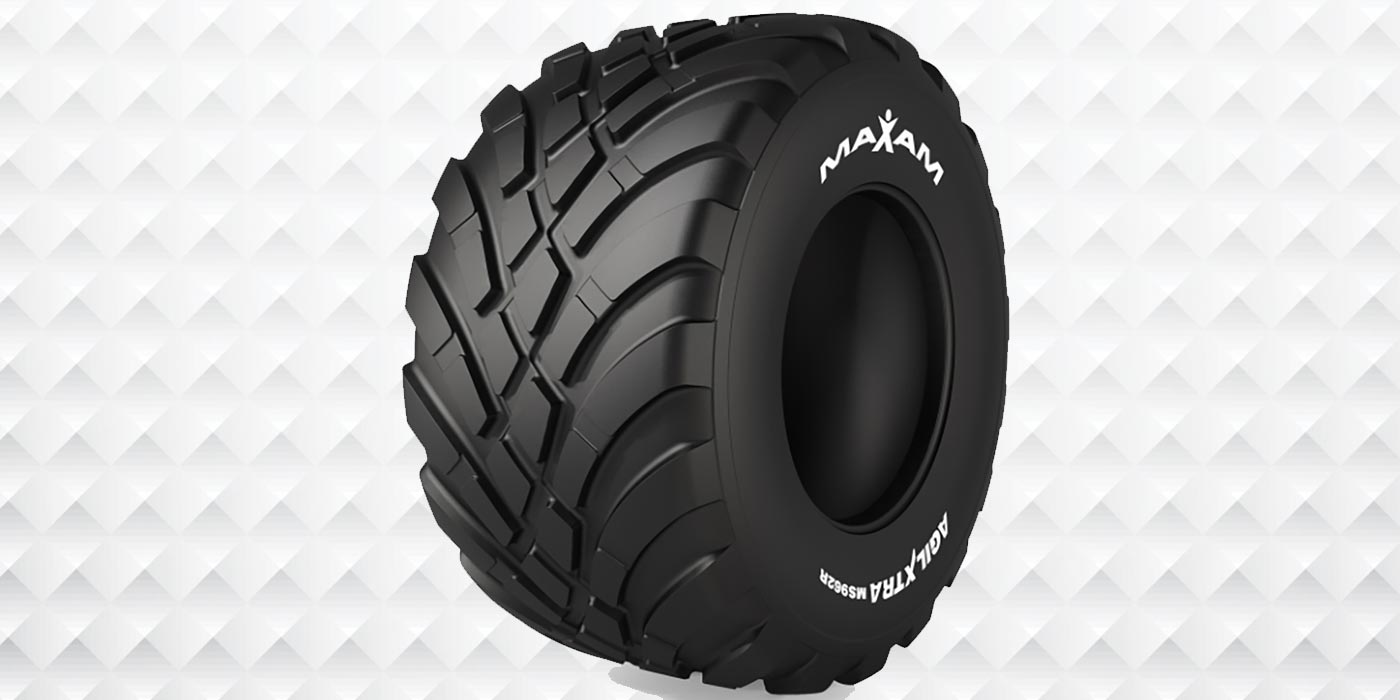Overall, North American farmers have had a good year. High commodity prices for grain and cotton, coupled with improved milk and pork prices and record high beef prices have resulted in farmers having profits to spend updating their equipment – and their tires.
In 2011, agricultural commodities prices went up by 31%, according to Jeff Jankowski, director of sales for Trelleborg Wheel Systems Americas Inc.
“Prices are high, demand is high, and for the most part, crops did really well with the exception of a few geographic areas,” said Bill Campbell, president of Titan Tire Corp. “Overall, the industry is up from last year. Farmers have money in their pockets, and they’re willing to reinvest that money in their equipment.”
In the U.S. – aside from floods in the Midwest and South that gave way to a dry summer, and brutal drought in parts of the High Plains and Texas – farmers have done well in 2011, according to James Tuschner, marketing director for Alliance Tire Americas.
Bill Haney, North American sales manager for BKT Tires USA, adds that the farm forecast for Mexico is tied heavily to that of the U.S., with exports of vegetables to the U.S. helping to offset imports of grain. Drought has affected field crops, but the overall outlook is better than average as farm income in Mexico rises with increasing food demand. He also says that though expenses are outpacing income and some regional crop failures occurred in Canada, the farm market in that country remains strong overall.
With an up market in all directions, North American tire dealers who service the farm market have excellent opportunities for added profits, provided they stay on top of the trends and technological developments that are key to the ag segment.
What Recession?
For the most part, the economic recession didn’t impact North American farmers – and if it did in some ways, those problems are a distant memory.
“Many farmers didn’t really feel the recession in their on-farm finances,” Alliance’s Tuschner explains. “The exceptions tend to be dairy, meat and cotton, which are closely tied to how much a consumer wants to spend in the grocery store or the mall. Still, while most non-farm segments of the economy limped along over the past couple of years, commodity and land values have been high.
“In fact, some of the impacts of the recession on the overall economy have actually been good for agriculture,” he continues. “We’ve got a weak U.S. dollar, which is great for exports, and we’re seeing a lot of sales to China, as well as to other countries. The demand for biofuel is using up our surpluses, which keeps prices high. So does speculation from Wall Street, which is buying commodities and farmland while it waits for the stock market to rebound.”
Titan’s Campbell agrees, saying, “As the middle class emerges in countries like India and Brazil, demand for our crops has increased significantly. Domestically, there is a huge demand for ethanol and other crop-based sources of energy. So, the North American farm market has remained strong, despite the dip in the economy.”
Equipment sales thus far in 2011 have been steady, Trelleborg’s Jankowski says, adding that sales volumes on the 4WD tractor segment are up 5.8% vs. 2010, but combine and harvesting machinery purchases in the U.S. have declined 3.7%. In Canada, the tractor market is growing by 4.7% and combine sales are up 6.6%.
Campbell cites figures from the OEMs with which Titan works that show sales are up anywhere from 20% to 25% in the ag market across the board compared to last year.
“When you look at individual manufacturers, some of the numbers are amazing – for instance, John Deere expects to see 25% growth in its worldwide equipment sales in 2011, and most of that is agricultural machinery,” Tuschner adds.
Translating that trend to tire sales, each manufacturer reports demand has increased this year.
“BKT Tire sales for both OE and the replacement market have been strong in 2011,” Haney notes. “We have experienced major growth in each of the past four years.”
“Both OE and replacement tire sales have grown substantially for us this year,” says Titan’s Campbell. “Not only are people buying new equipment, but they’re making adjustments to their old equipment to bring it up to today’s standards. As demand for crops is growing, farmers are increasing yields by spacing rows closer together and increasing capacity by adding extensions to their grain carts. These adjustments often necessitate larger, narrower tire and wheel assemblies or tires with increased load capacity. So, when the farm market is doing well, we’re doing really well in both OE and replacement tire sales.”
Looking ahead, Titan’s OE customers have predicted an additional 10% to 20% upswing in 2012, fueled by crop prices and global demand, he adds.
“Current orders for spring 2012 have been the strongest ever,” BKT’s Haney notes.
Alliance’s Tuschner explains, “Many farmers are getting good returns this year and will want to invest some of that money in new equipment. Many growers also will be buying replacement tires to keep older equipment in good shape as they prepare for the possibility that they may have to race to plant their 2012 crops like they have during the past two rainy springs.
“Farmers and ranchers are being called on to produce more food in the next 50 years than mankind has produced in the past 10,000 years,” he adds. “It’s going to be all about hard work and good equipment – which includes tires that don’t let you down.”
Growing Trends
Just as certain as tiremakers’ forecasts for a strengthened market are their predictions of changing tire trends. Farmers will seek tires that offer high traction, low soil compaction, better fuel consumption, increased wear resistance and comfort, and higher on-road speeds.
“There also will be high demand for value-driven lines that deliver great return on investment for tires that will be used on utility tractors – the machines that are hauling grain carts, handling feed and doing odd jobs around the farm or ranch, where farmers want the benefits of radial construction but don’t need to put premium tires on,” Tuschner says.
“In the 1990s the biggest tractor in the market had 240 hp with a maximum speed of 25 mph and it was fitted with a 650/65R38 tire (about 75 inches high),” says Trelleborg’s Jankowski. “Today tractors have 360 hp and they can drive 40 mph. These tractors are fitted with bigger tires, such as the 710/75R42 or 900/60R42 (about 85 inches high).”
Other trends include increased flexion tires that are rated to handle higher loads at lower inflation pressures; and low sidewall tires (LSW), which have a reduced sidewall size and smaller air chamber, giving the tire a longer footprint and better stability to improve flotation while reducing power hop and providing a smooth ride for the operator, Titan’s Campbell says.
Thriving Business
To succeed in the ag tire market, dealers must keep up with changing trends, technical details and new tire offerings. “Awareness of competing product differences and value will help sell tires for them,” BKT’s Haney adds. “Farmers are becoming very professional. So too, should their tire suppliers.”
Titan’s Campbell says, “As tires and wheels are getting bigger and narrower, it’s going to take bigger equipment to be able to service them. Dealers need to make sure their technology is keeping up with the changes in the tire industry. Similarly, dealers need to provide ongoing training for their service technicians, so that they understand the proper procedures for servicing the new sizes of wheel and tire assemblies, as well as new technologies.”
Trelleborg’s Jankowski cites three important factors for dealers in the farm tire segment: trained service technicians, special equipment and an updated inventory.
Dealers can set themselves apart from the competition by “learning the product lines they carry, making sure they have a broad enough lineup of purpose-built tires for their customers’ real-world needs, and being able to supply farmers with the best tire for the job at hand,” Alliance’s Tuschner says. “It’s all about giving farmers a choice and helping them get value – a strong return on their investment.”
And as always, dealers can best set themselves up for a profitable segment by offering reliable service during a farmer’s crunch time. To sum it up, “If a farmer can count on you, he will be fiercely loyal to you,” Tuschner notes.













